Singapore was our last stop on this Southeast Asia tour. We had planned 5 nights–only 4 full days–to get to know this island city-state so we knew we would have to use a different strategy from our usual slow-and-easy travel.
Singapore is one of only 3 city-states in the world (along with Monaco and Vatican City). To put it in perspective, Canada has a population about 6 times the size of Singapore (USA population is 56 times the size), but the landmass differential is startling.
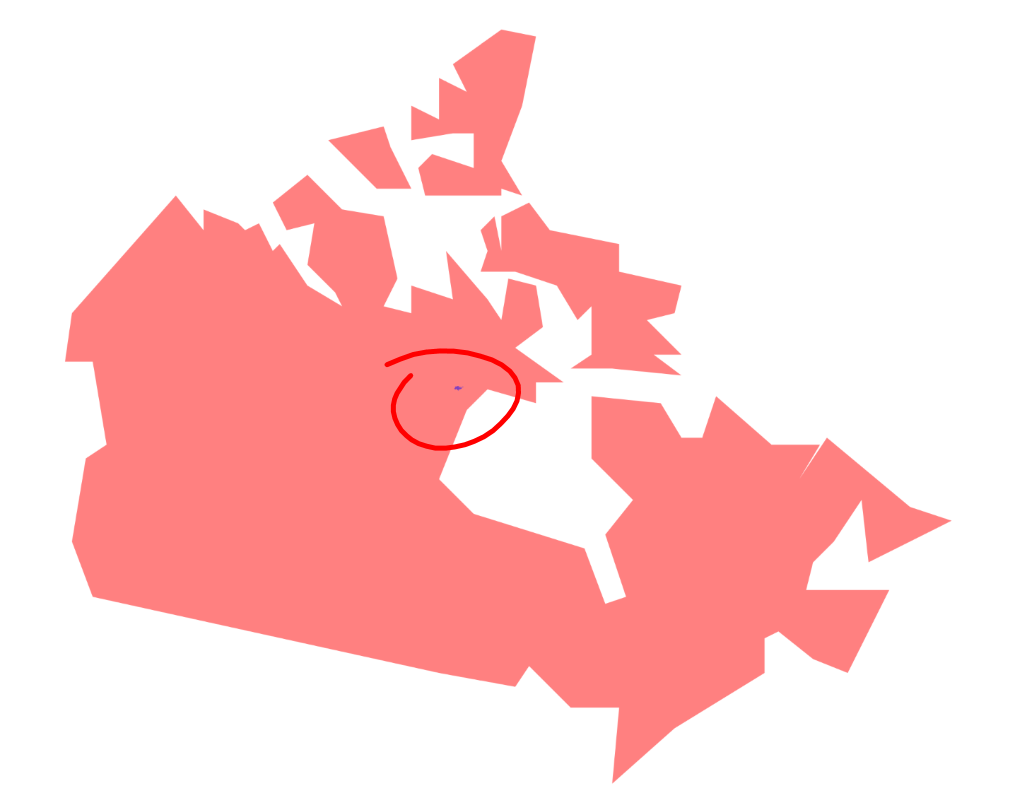
Can you see that tiny little purple blob on the graphic of Canada? That’s the comparative size of Singapore. As a country, it’s tiny. But as a city and an economy, it’s a powerhouse.
Singapore is a global hub for education, entertainment, finance, healthcare, human capital, innovation, logistics, manufacturing, technology, tourism, trade, and transport. The city … has been recognised as the most “technology-ready” nation (WEF), top International-meetings city (UIA), city with “best investment potential” (BERI), world’s smartest city, world’s safest country, second-most competitive country, third least-corrupt country, third-largest foreign exchange market, third-largest financial centre, third-largest oil refining and trading centre, fifth-most innovative country, and the second-busiest container port. The Economist has ranked Singapore as the most expensive city to live in, since 2013.
From Wikipedia: https://en.wikipedia.org/wiki/Singapore. Refer to article for citations.
Our hotel was a little outside of the center core (we had booked with Airmiles so our choices were limited) but we were quite happy with its location. It was in a pleasant area with plenty of restaurants around (including hawker centers that a driver told us were great and cheaper than in town).
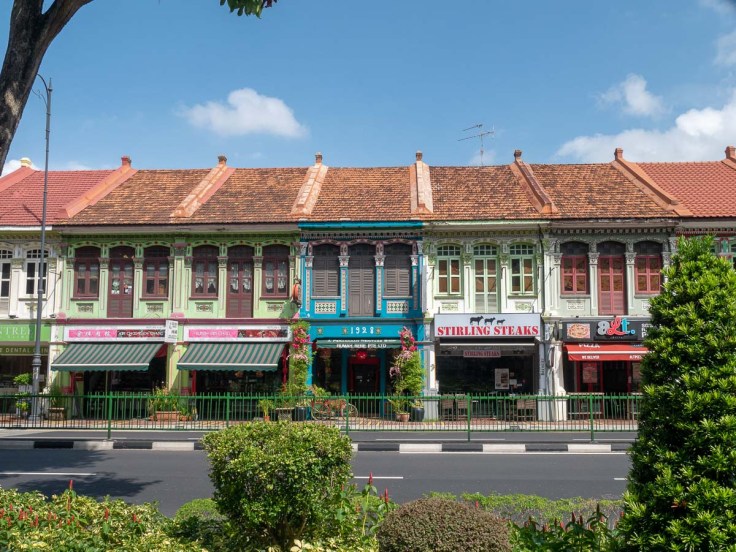
We used Grab to get to the hotel from our bus drop off point, and again to the airport on the final day. Grab works well, but is much more expensive in Singapore than anywhere else we had been. Transit is fantastic. We purchased two 3-day tourist passes, which allowed us to use any bus or train in the city for 3 consecutive calendar days (rather than 24-hour periods). We hopped on and off trains and buses (sometimes choosing buses over the underground trains so we could see more) for the first 3 days. All of the vehicles and stations (well, the entire city, actually) are extremely clean, comfortable, and safe.
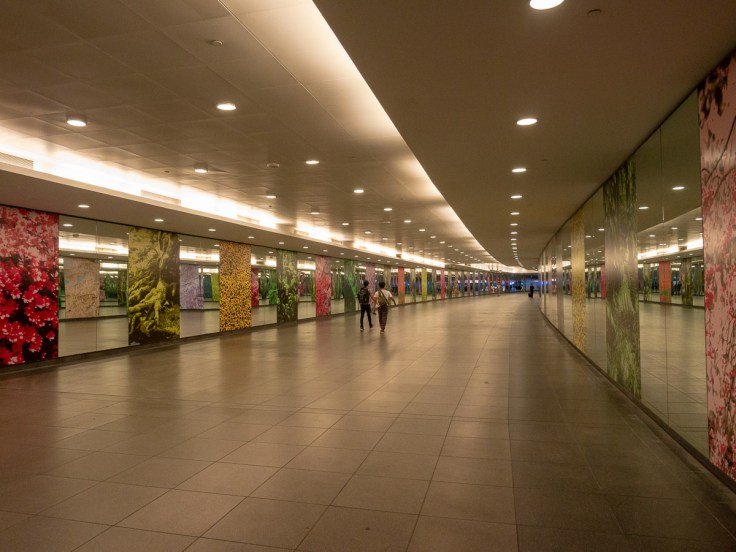
Gardens by the Bay
There are several attractions in the city that would make it a good family vacation location (an entire island, Sentosa, subtitles itself the State of Fun, and can be accessed by cable car), we opted to skip the tourist attractions and see as much of the city as we could. But I couldn’t go to Singapore without searching out the iconic giant tree sculptures, which we found in the beautiful Gardens by the Bay. We visited in the evening so we could see them lit up, and then again during the day.

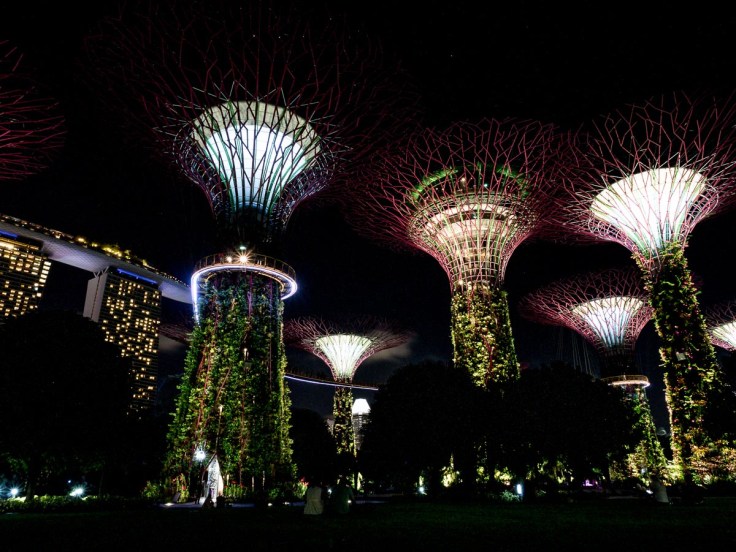

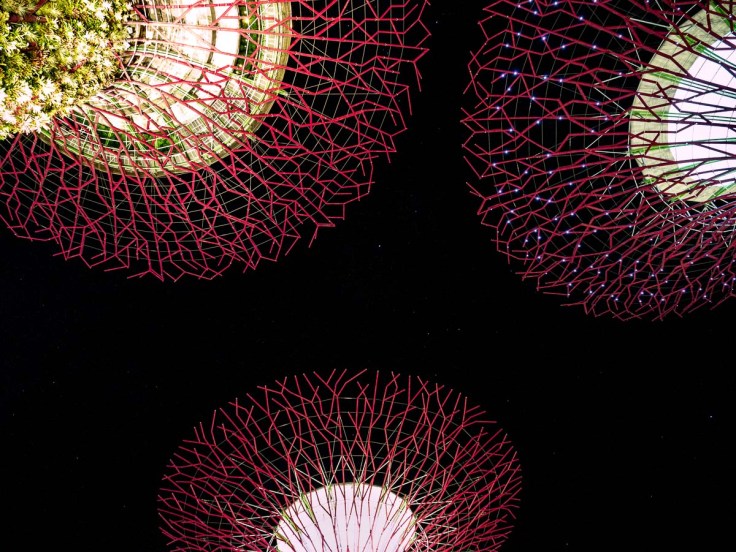


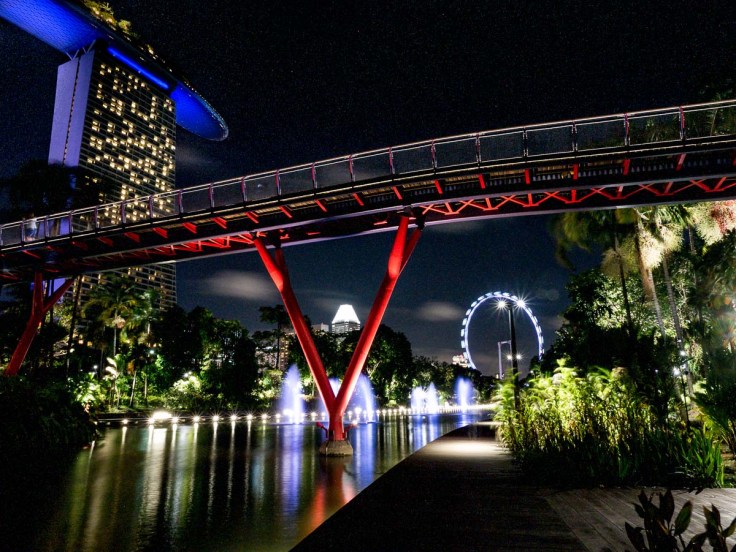
For our daytime trip to the gardens, we had started with a visit to the Red Dot Design Museum. Our timing was great as there was a brief but strong downpour while we were under cover.

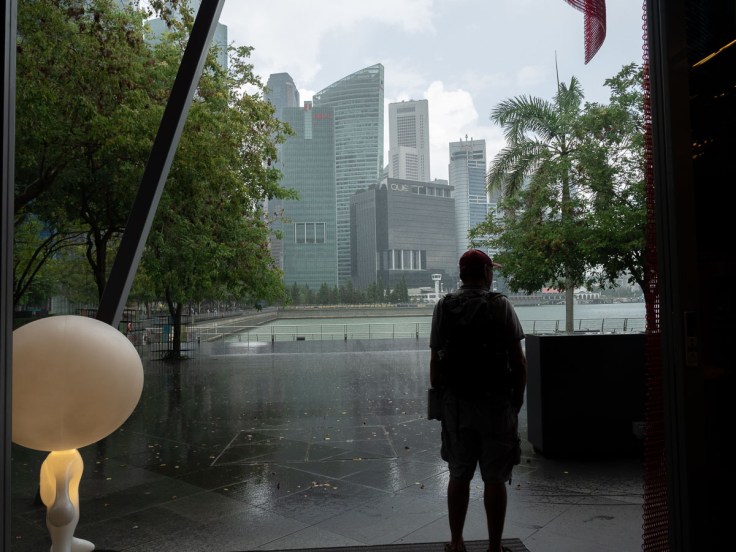
The waterfront outside the museum provided a different view of the city and its fascinating architecture.
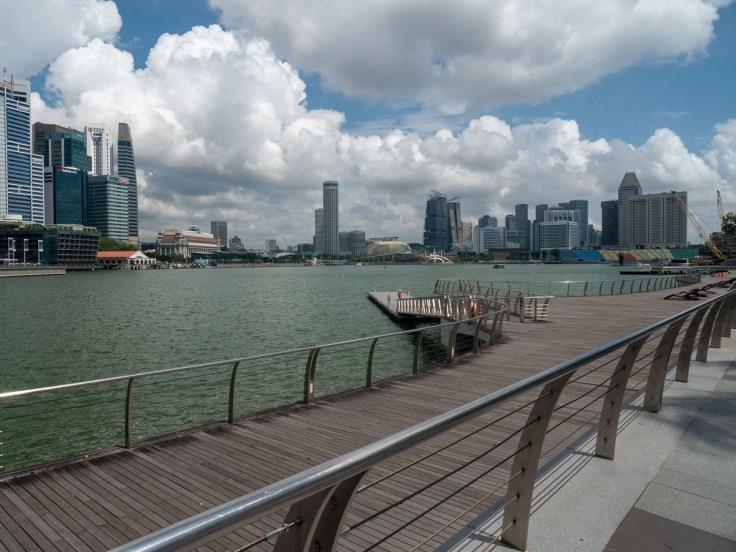

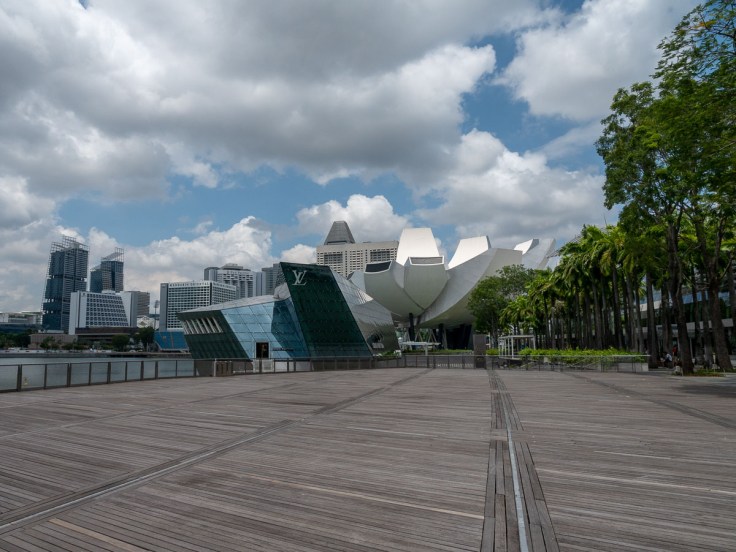

From there we walked toward the Marina Bay Sands and over a walkway that took us inside and through this amazing structure. The hotel was designed by Israeli-Canadian architect Moshe Safdie, who also designed the ArtScience Museum as the community portion of the complex.
At the base of the hotel is a glamorous shopping plaza.

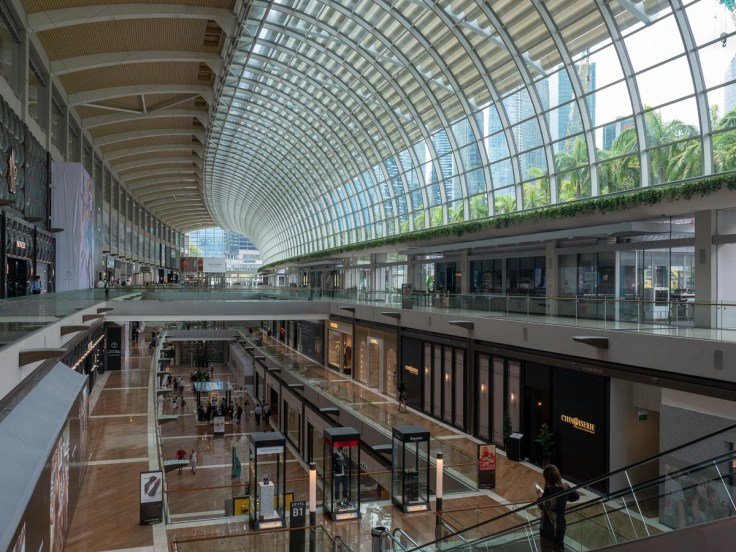
At the level of the walkway that joins the shopping plaza to the gardens, we sat and enjoyed the view out to the port. On the hotel building, entire walls appeared to ripple like curtains in the breeze. They are made of individual metal rectangles on hinges and the metal pieces sway freely, creating a very interesting effect. The metal curtain provides shade as well as sculptural interest.

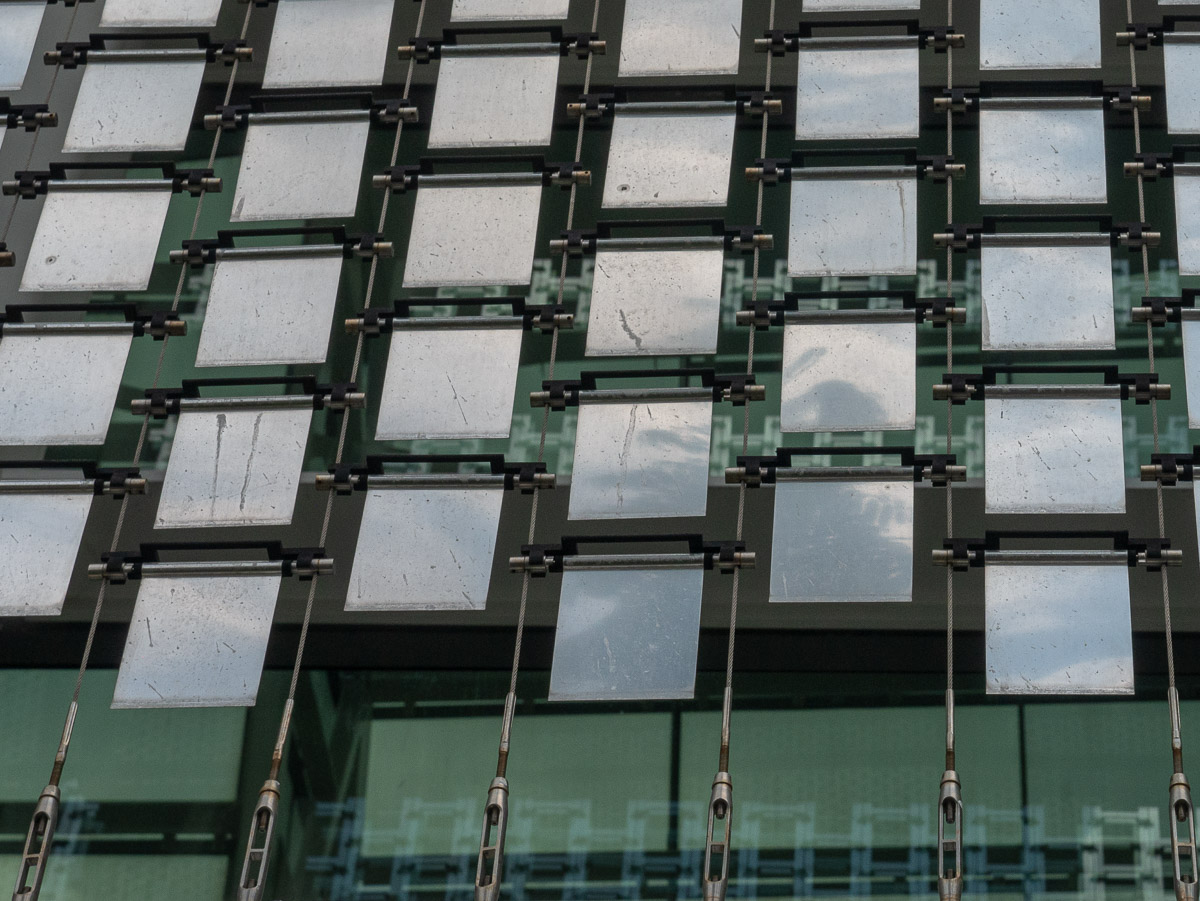
What appear to be solid pillars are actually open structures with rooms climbing up either side and open hallways joining one side of each pillar to the other. The open area below contains restaurants and shops. From the walkway we were on, you can look through the hotel pillars to the world beyond.
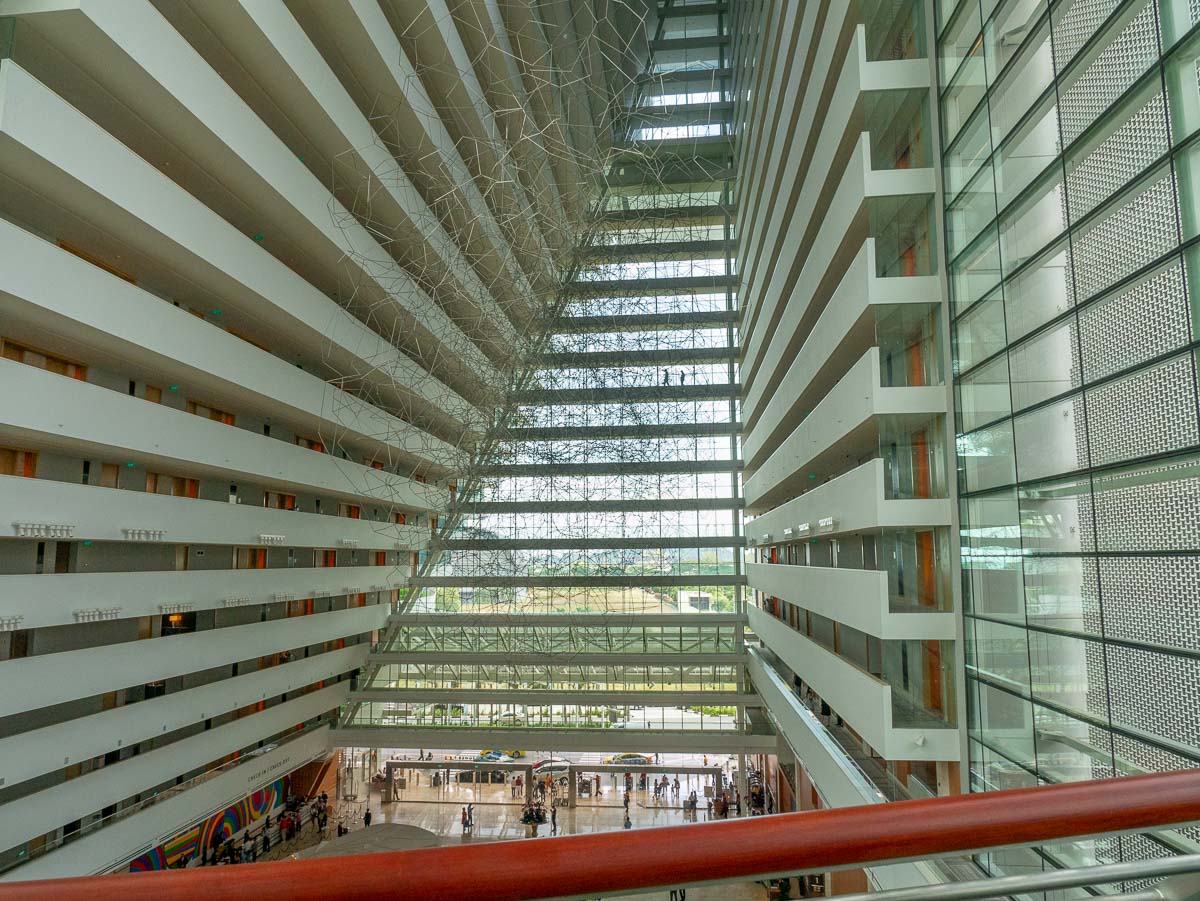
On the other side of the hotel is access to, and views of, the Gardens by the Bay, with walkways, lake, Supertrees, conservatories, and multiple gardens. Access to the gardens is free. There is a paid shuttle to provide easier access to the conservatories, a self-drive vehicle for a unique spin around the grounds, and a charge to access the treetop walkway.
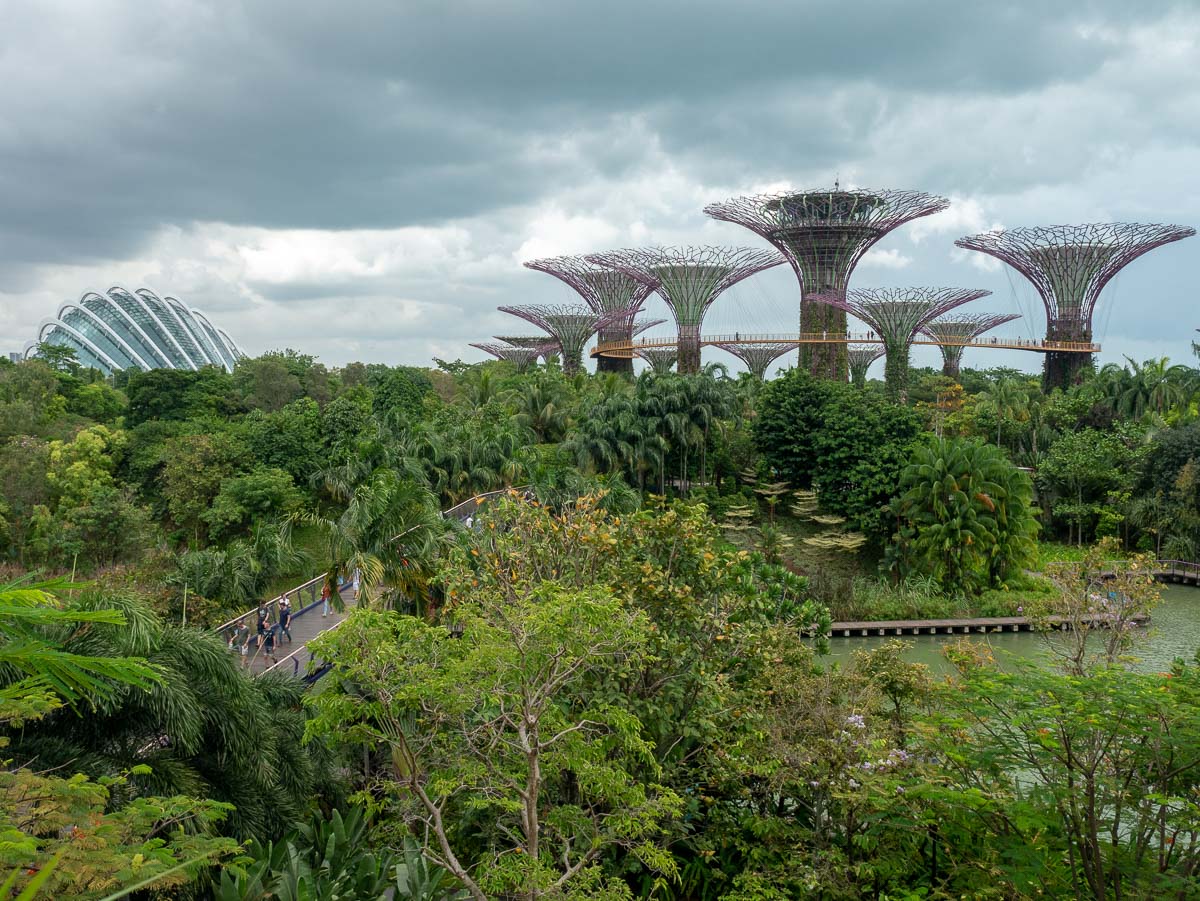
Chinatown
We took the train to Chinatown and, on exiting the station, were surprised to see a line of beautiful shuttered buildings with market stalls and restaurants on either side.
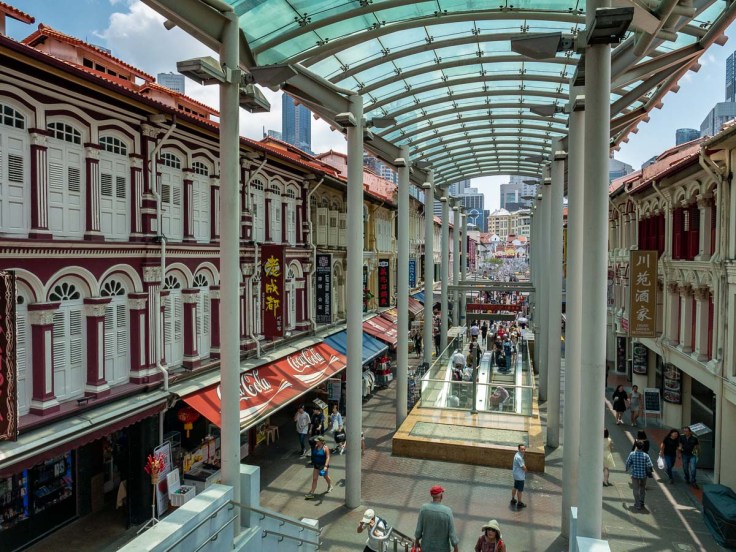
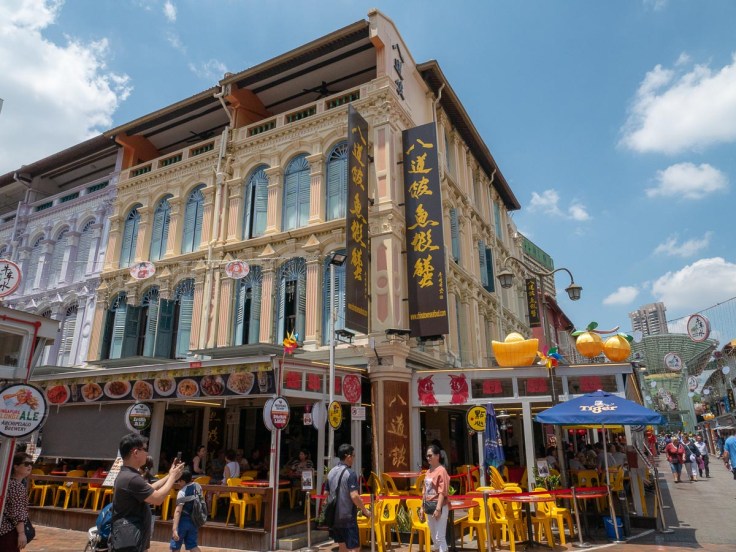
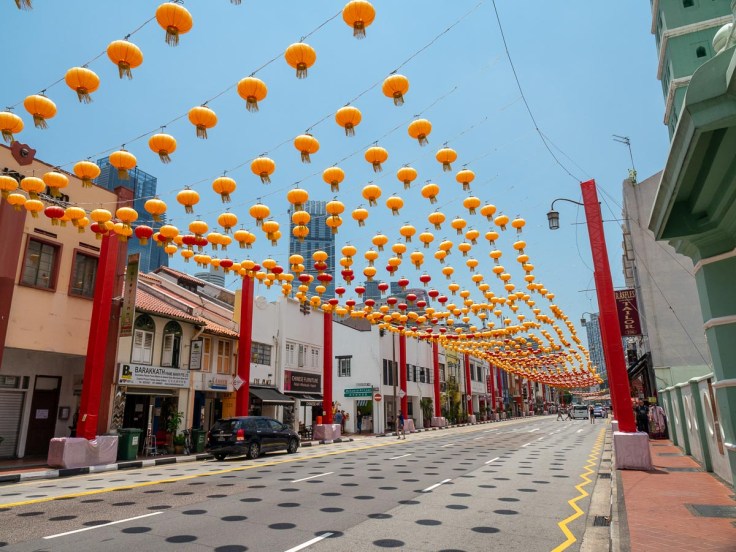
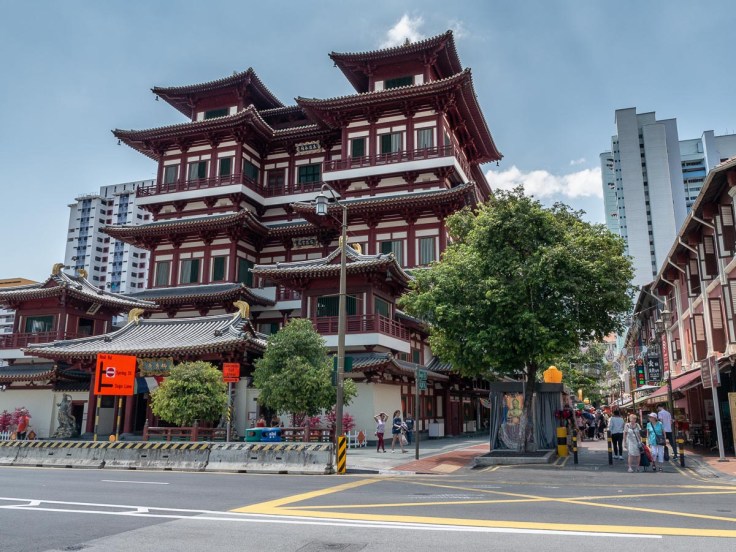
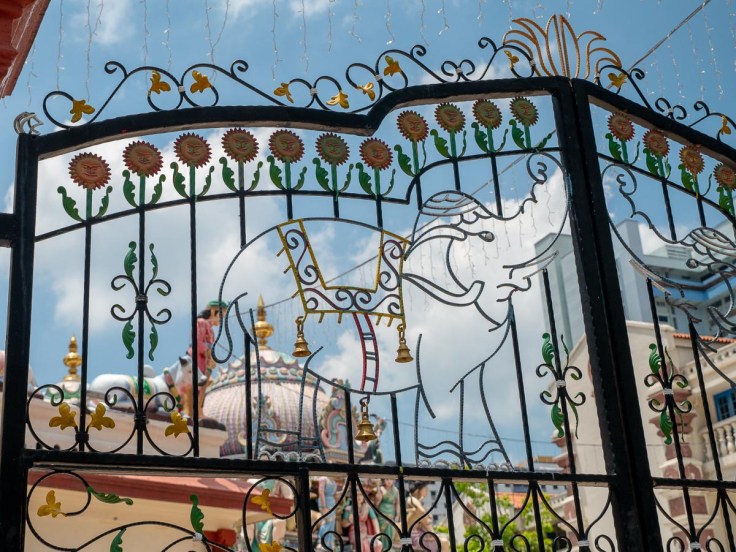
Little India
A trip to Little India was equally colourful.

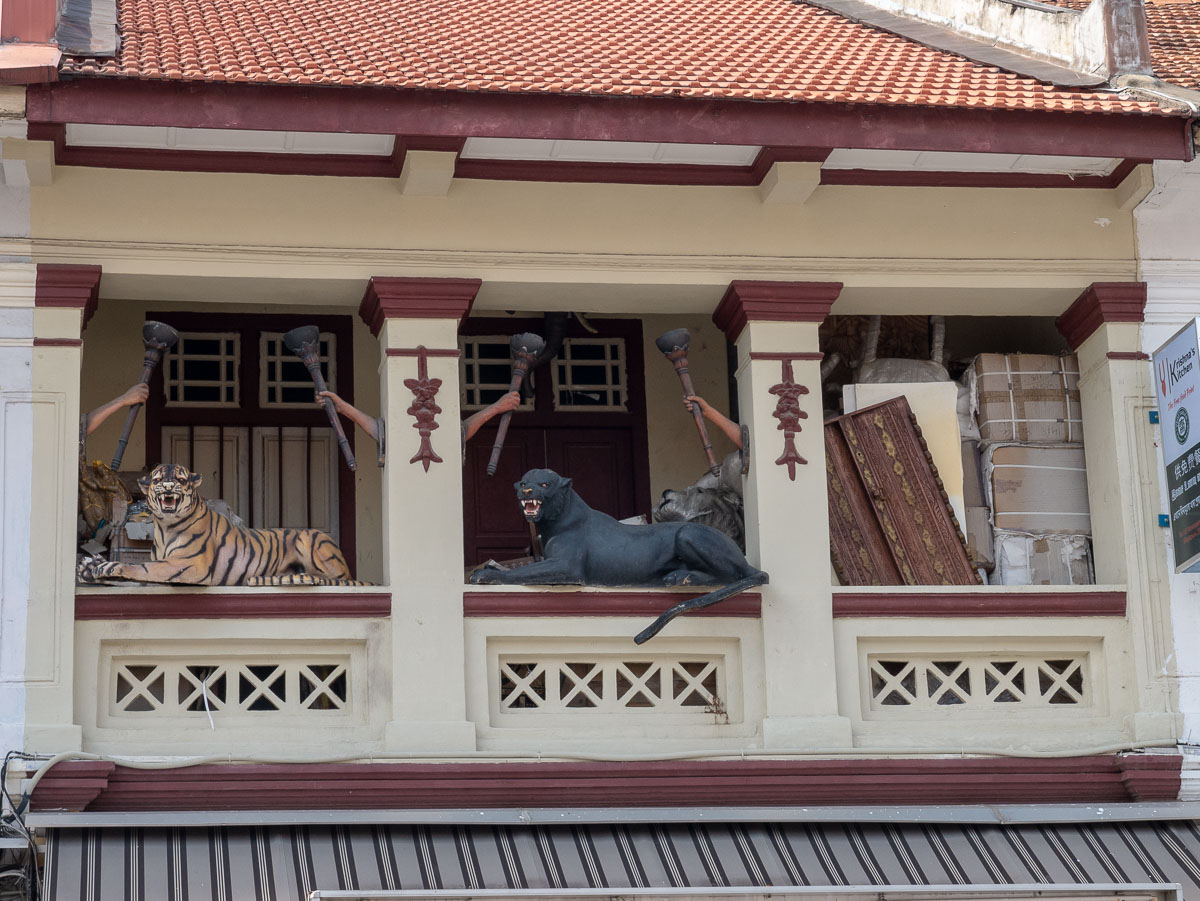
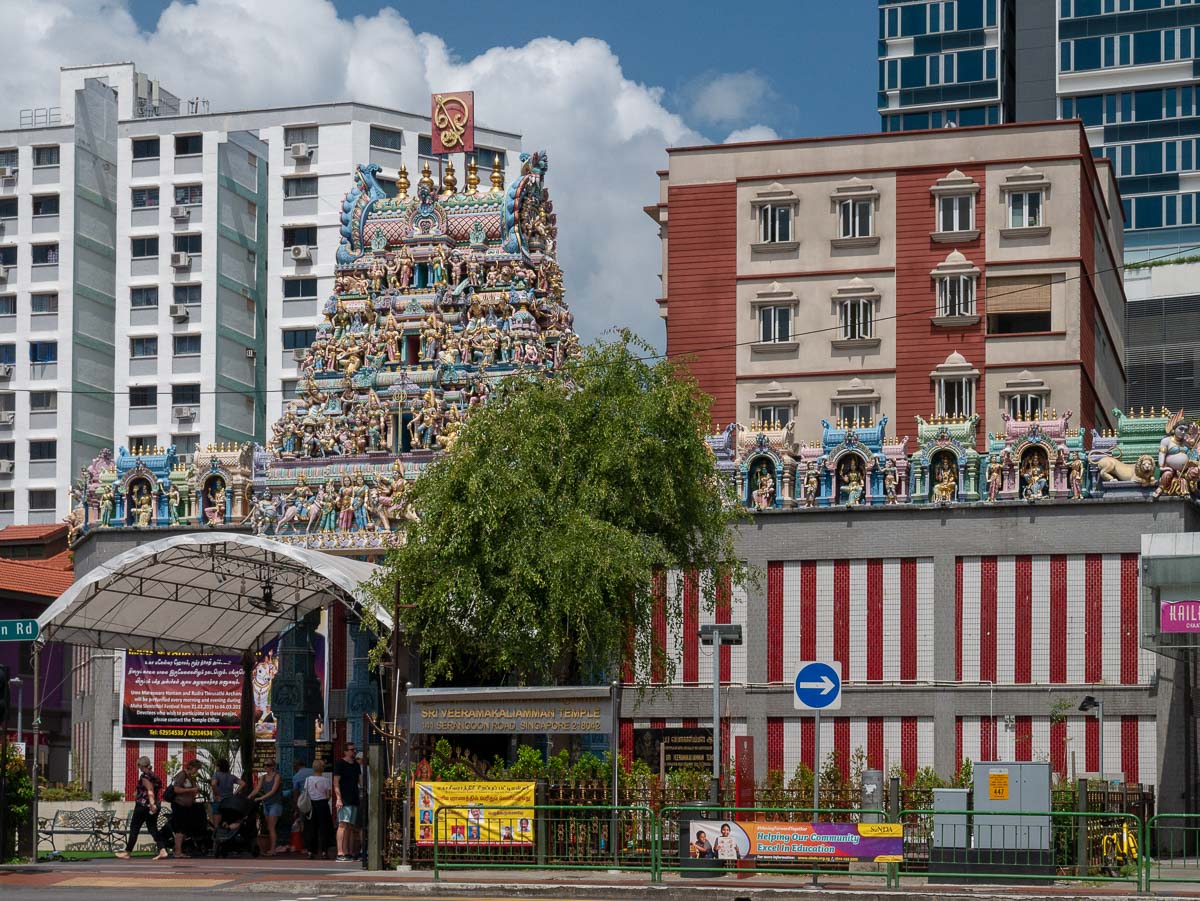
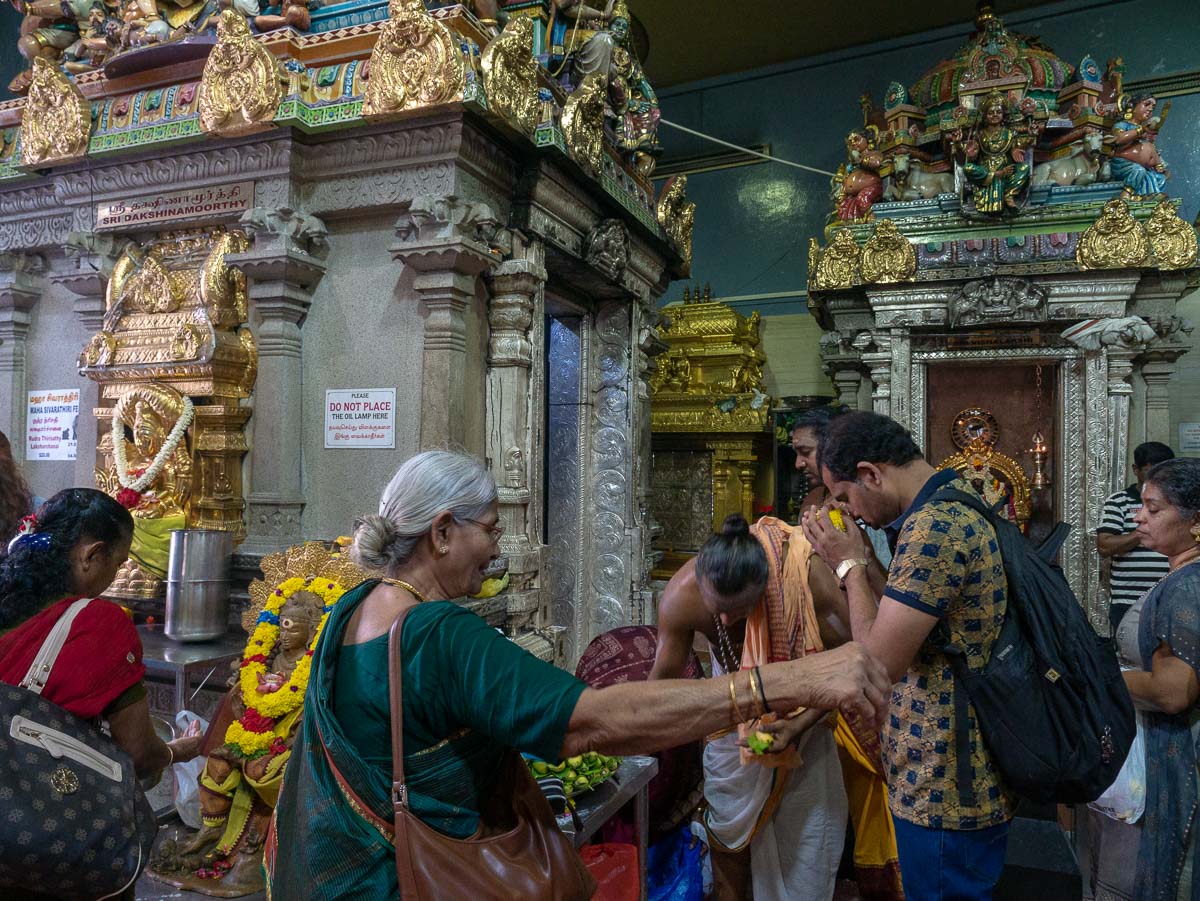
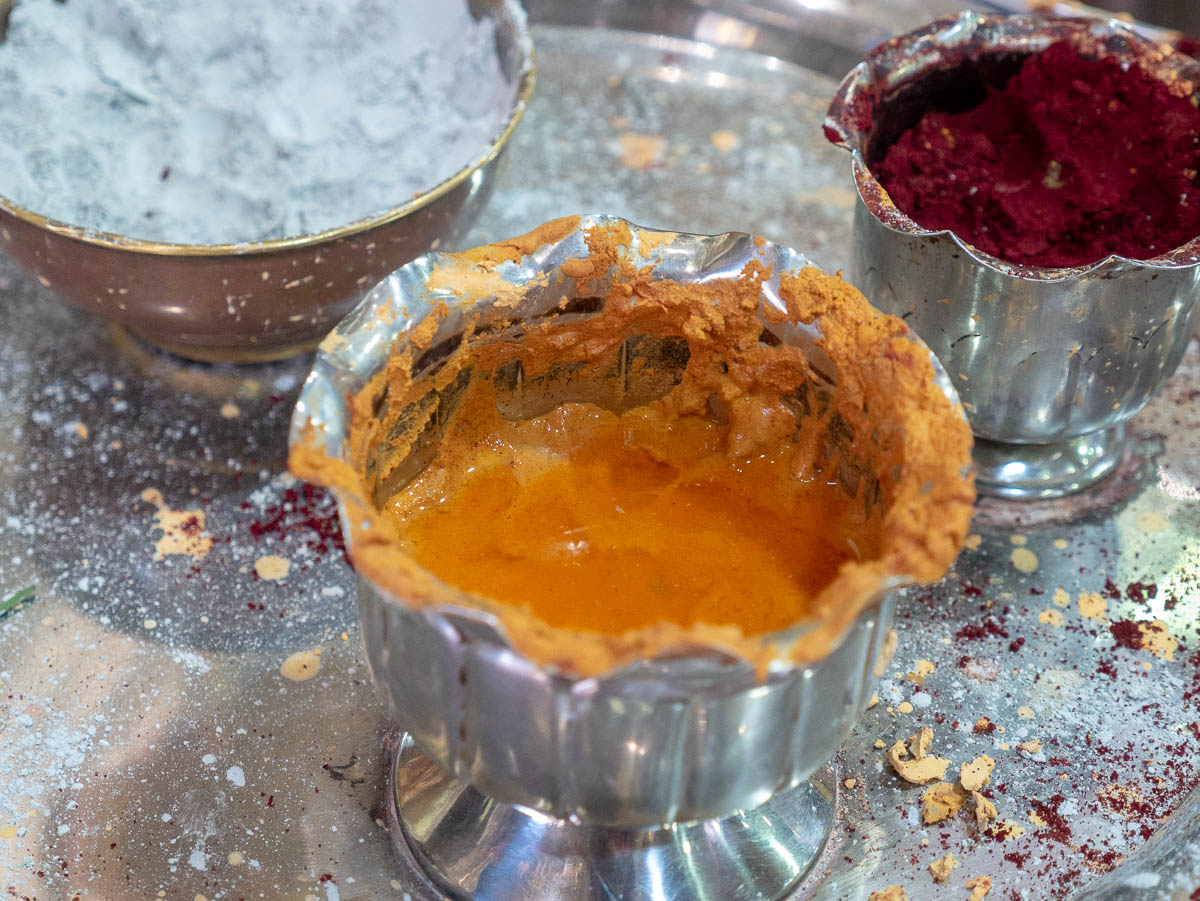
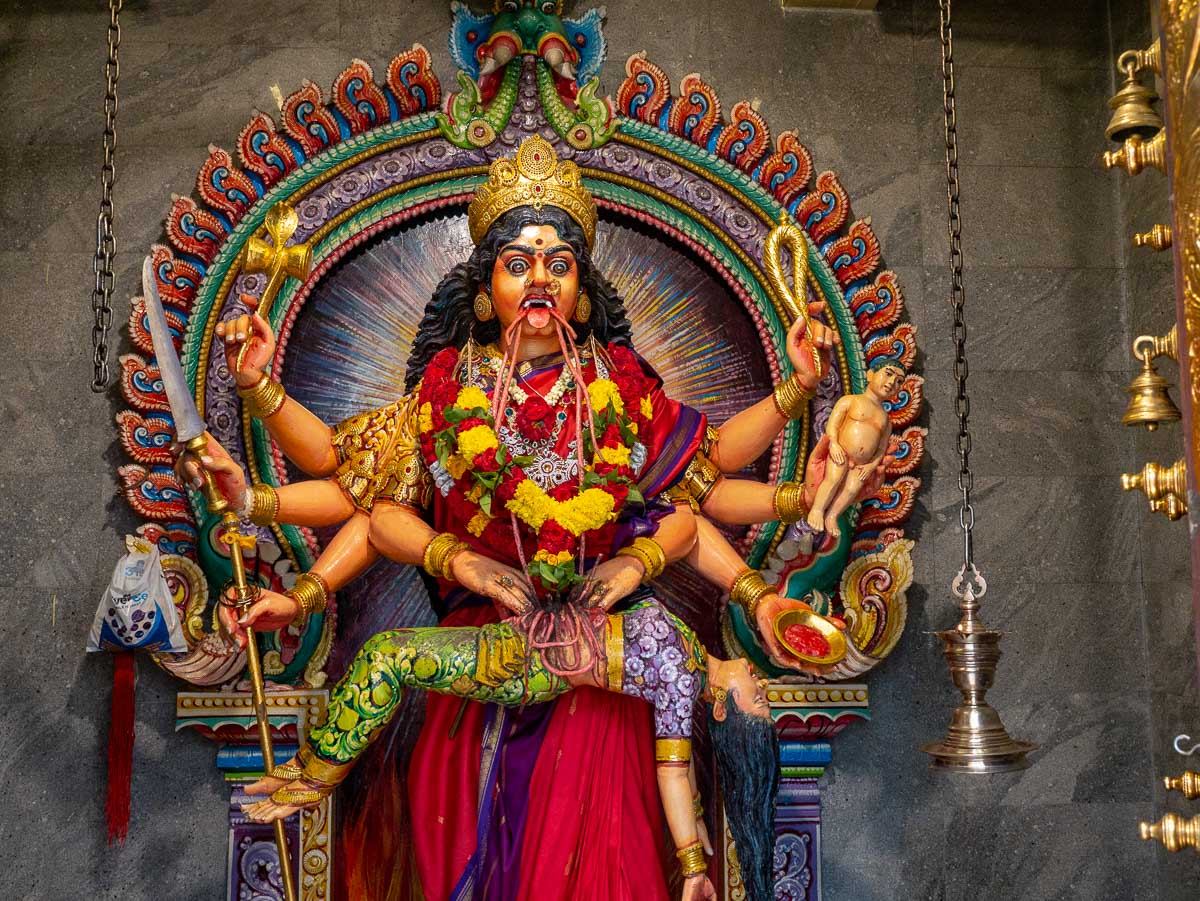

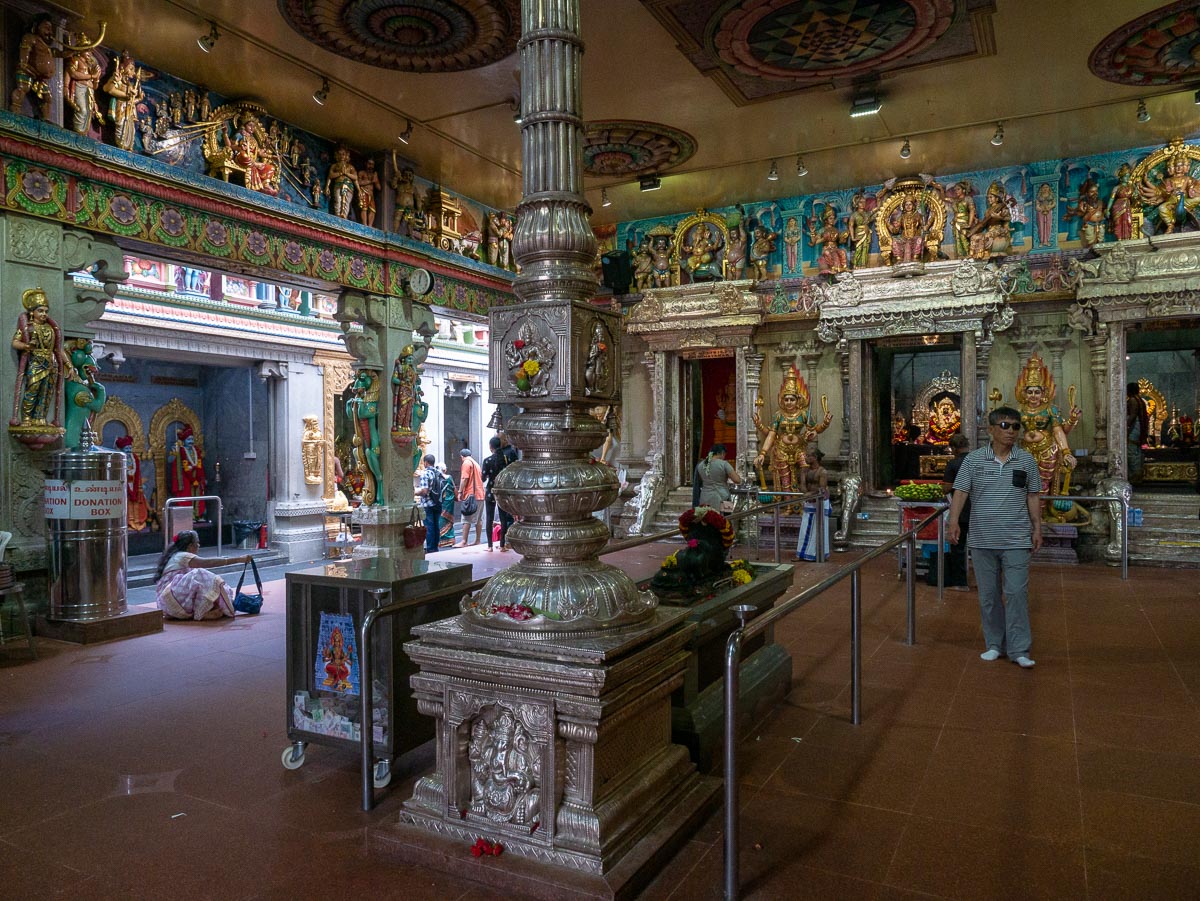

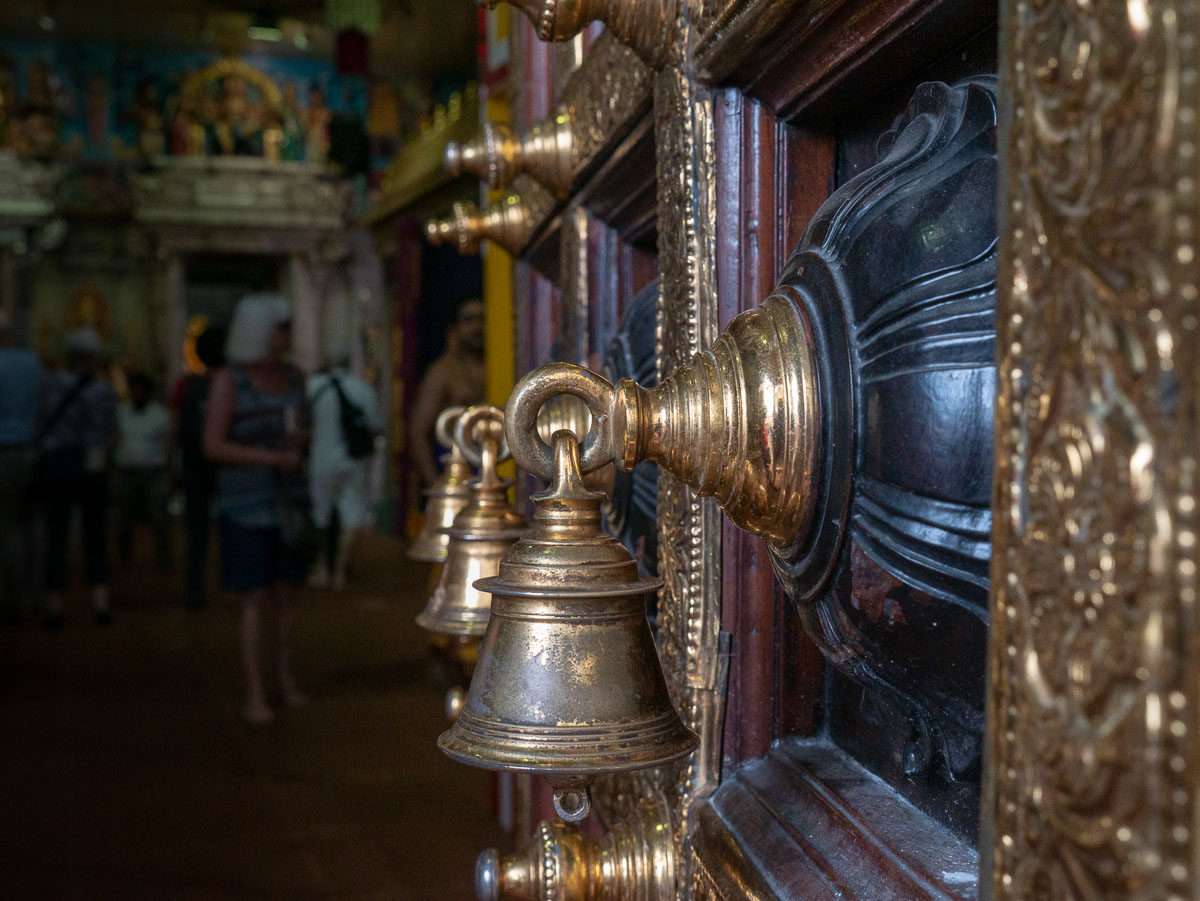
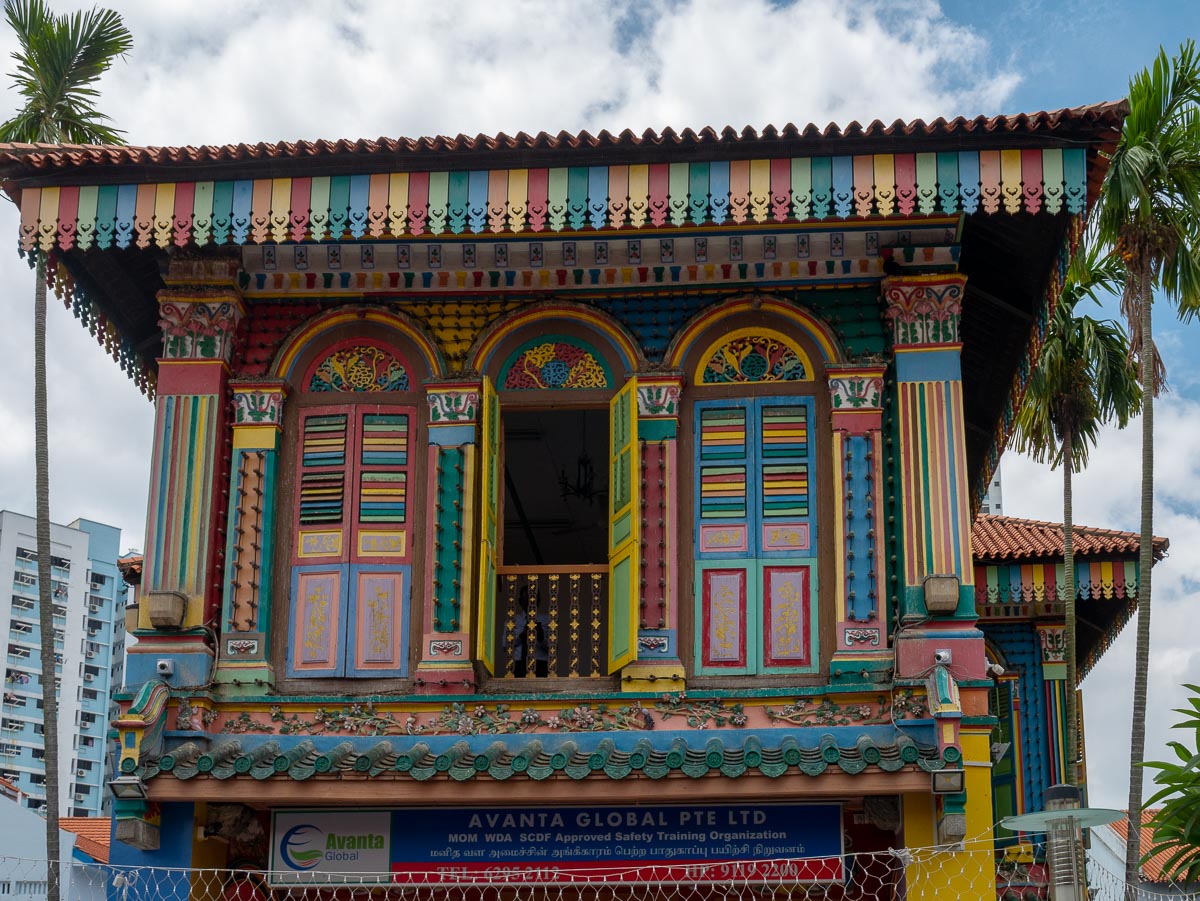

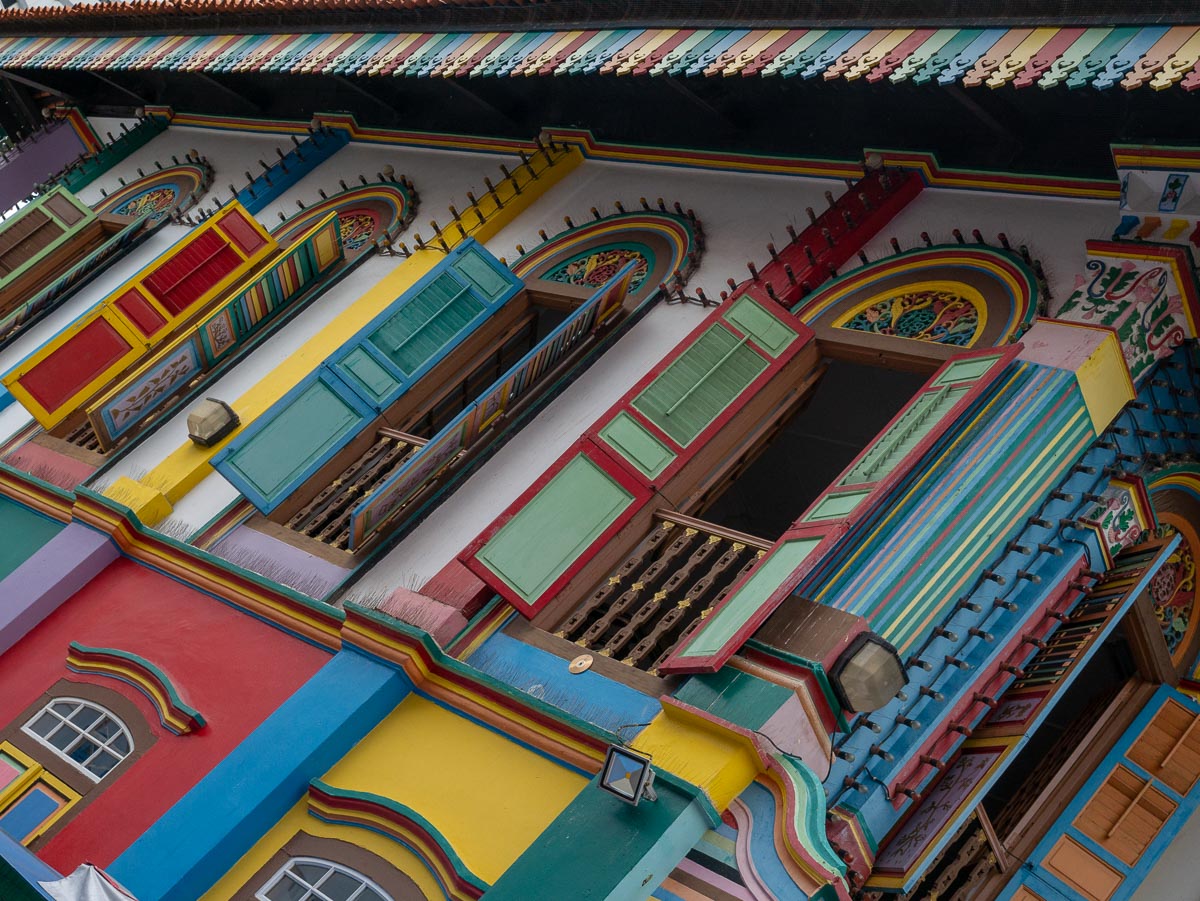
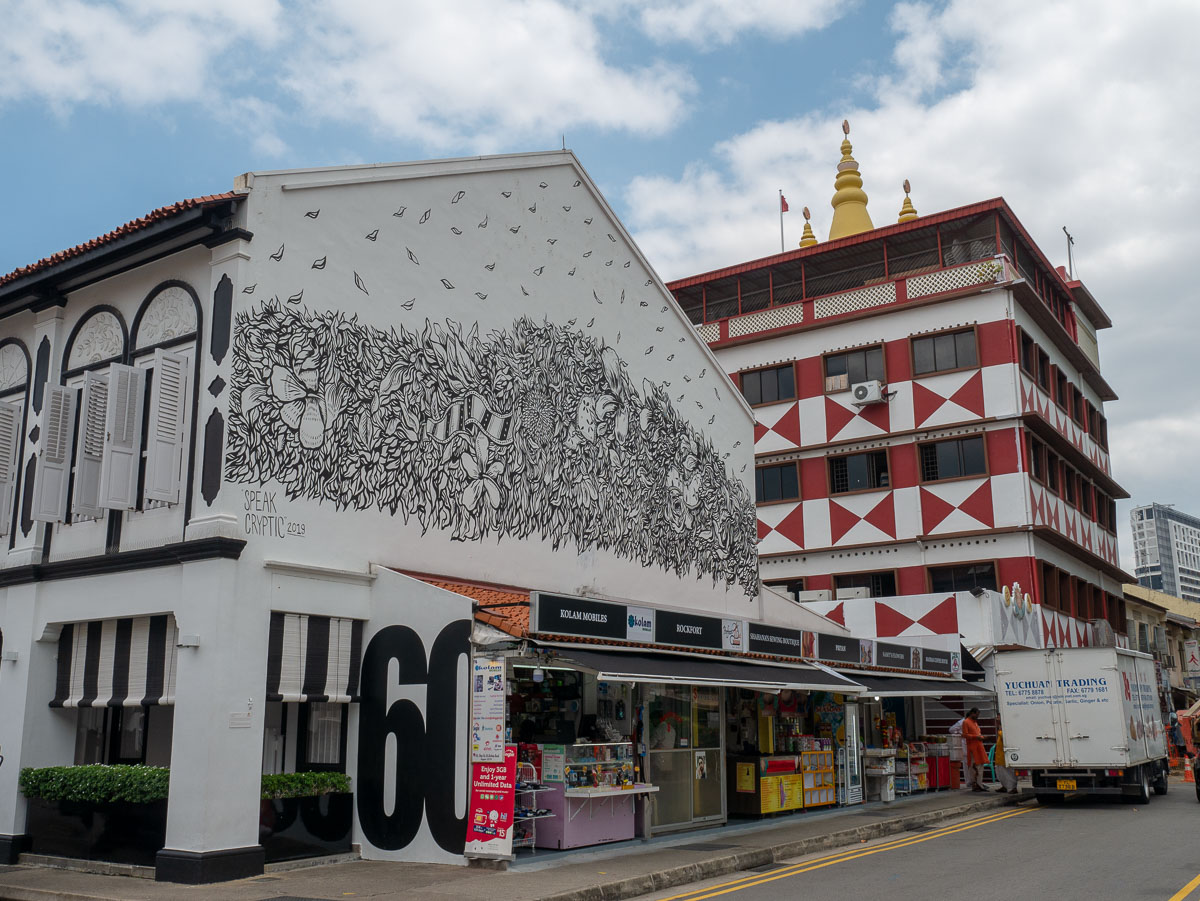
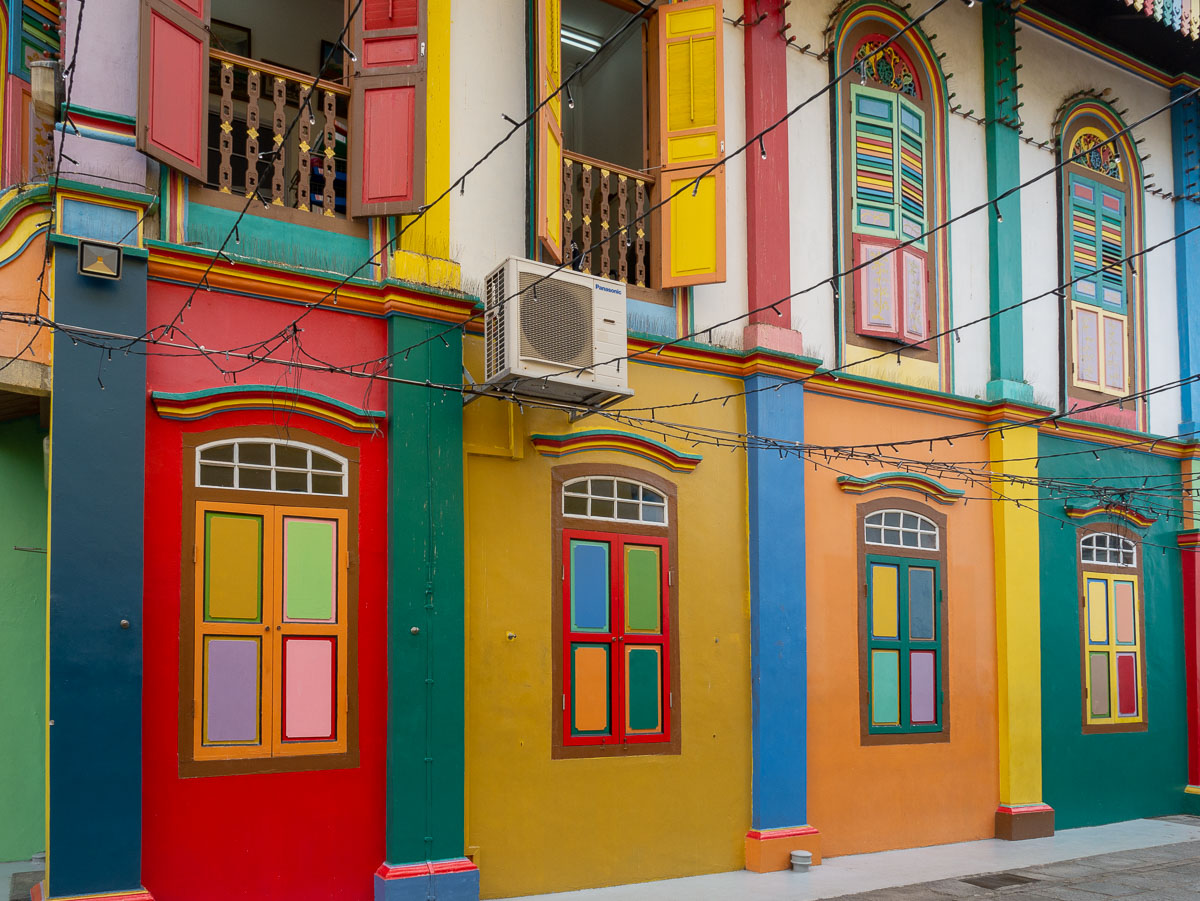

Singapore Botanic Gardens
At 160 years old and a UNESCO World Heritage Site, the Singapore Botanic Gardens is another important greenspace. It is filled with various specialty gardens like the bonsai garden and spice garden, all accessible by free-to-wander trails throughout the park. Apparently the most popular for tourists (we were advised by the security/guide at the gate) is the National Orchid Garden (S$5 per person), which houses more than 600 species of orchids. We just walked the trails, including the rainforest trail, to reach the train station at the other end.

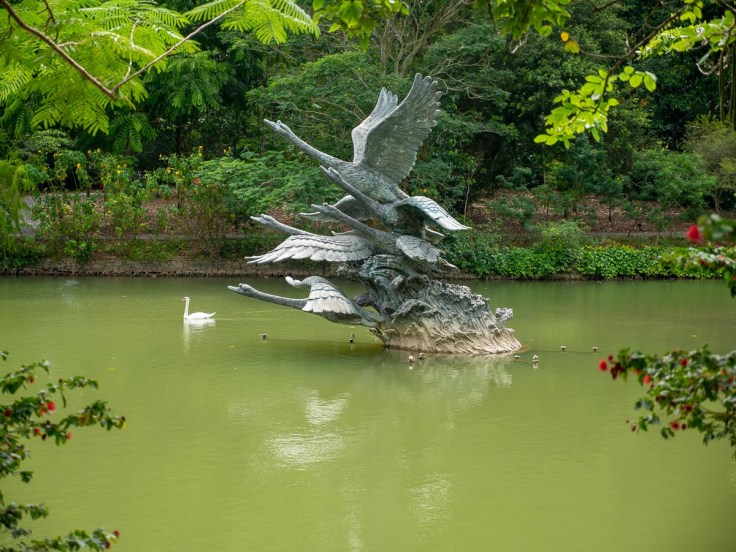

Shopping
Though not shoppers ourselves (possibly closer to anti-shoppers), we suspect that Singapore would be a shopper’s paradise. There are shopping malls everywhere. The ION Orchard area was suggested as a place to visit. The buildings are certainly beautiful and the brand-name shops huge and glitzy.
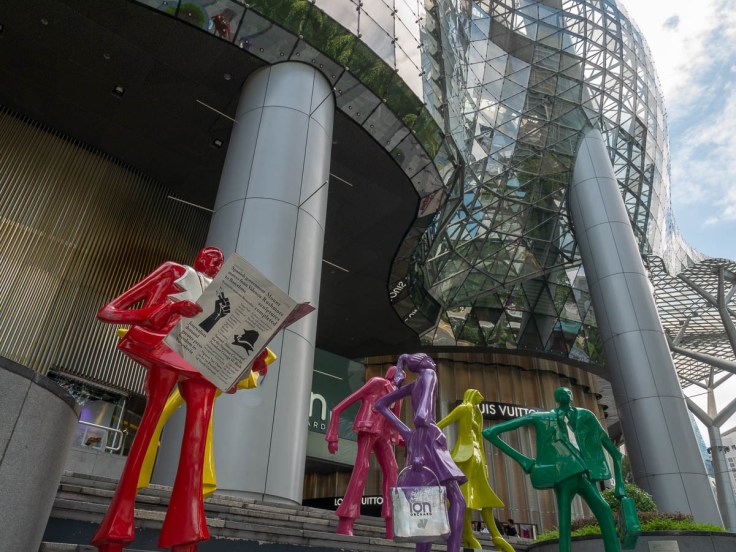
East Coast Park
We had planned to visit East Coast Beach on our final day since we would no longer have transit passes and could walk there. It is a waterside park that runs along the coast several kilometres. We considered renting bikes (rentals just outside of the park cost S$10 for 4 hours) and riding along the 15km cycling and skating path, but opted for a walk and then a shady hangout by the water instead.


We only saw a small section of the park, but it included many family-sized barbeque areas, swimming beaches and plenty of shade. As we left the park in the early evening the family picnics were sprouting up everywhere.
We really enjoyed our time in Singapore and loved bopping around on the trains and buses. With this post, we bid goodbye to Southeast Asia for the second time, and Singapore was a fine way to top off a wonderful 3 months in the region.
TripBits
- Bus from Malacca to Singapore: Having read that many of the bus companies do not allow enough time to get through the borders, we went with one of the more expensive but recommended companies, Luxury Coach. We were able to walk from our Malacca accommodation to the Equatorial Hotel for pickup. Our bus was large and comfortable with room for 40+ people but it had only 10 passengers aboard, plus a captain (driver) and guide. Cost for the 5-hour trip: S$32 (about the same CAD) per person.
- Transit passes: Since we came in on the bus, and took a Grab to our hotel, we had not been able to purchase a transit pass before we needed it. We asked our hotel and they said to go to the nearest train station. So we walked the 2km to the nearest one (we could have taken the bus, but then we would have needed small change and would have had to figure that out, too!). When we arrived and found the service desk, we were told we needed to go to one of a list of specific stations, and that one wasn’t on the list. The fellow was really terrific, though. He provided a transit map, helped us to buy our tickets, and gave us great instructions. Once we got to the correct station and had our passes, it was all clear sailing.
- Red Dot Design Museum: Entry is S$11.80 and includes a full catalogue of the exhibits. We received 2 hard-copy books (though they were described as soft-cover on the entry information), but returned one.
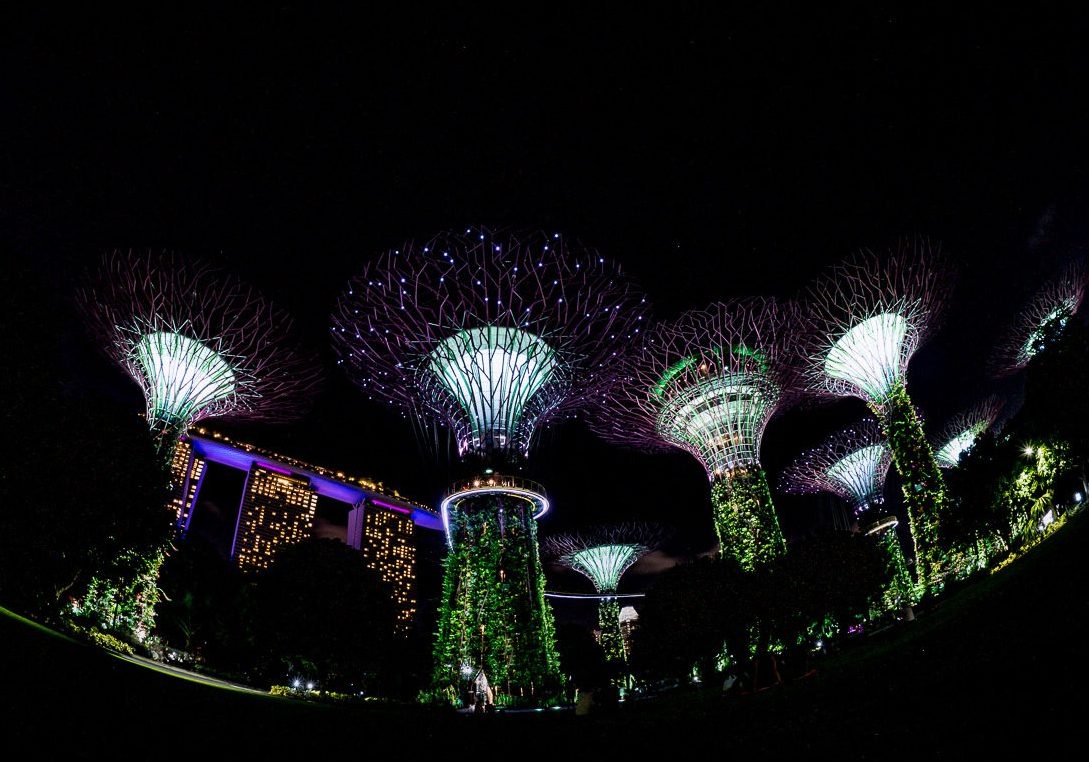
Such a wonderful and diverse city. Loved your captures of Singapore 🙂
LikeLiked by 1 person
That it is. We would love to return to see more. Thank you!
LikeLiked by 1 person
Coral & Ken……great look at Singapore from your perspective. Just wondering how you manage to take street pictures with next to no people around ????? We know the population is huge, always think of it as being a mega-metropolis of humanity. And yet, your shot of the lanterns in Chinatown…..wide open ! LOL…… We’ll be sure to travel through there the next time we get back here too. Leaving Lombok in 12 days….keep in touch !
LikeLike
It truly was that empty! Only once on our travels was the train or bus more than half full. It was far more relaxed than we expected. Looks like you are doing everything possible in Lombok!
LikeLike
Amazing city/country! I love the tree sculptures! Where do you head to now?
LikeLiked by 1 person
Waiting for you to get home so we can go for a beer! We’ll be gone before you get here, back to Calgary until mid April. Let’s talk so we can plan something for after that.
LikeLike